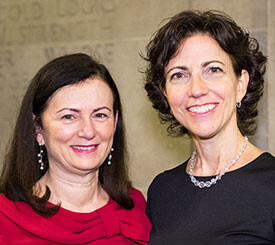Mobile Menu
- About Us
- Undergraduate
- Graduate
- Postdocs
- Research
- Alumni
- Giving

CIHR
Dr. O’Connor’s and Dr. Unger’s Research: The gestation period of humans is about 266 days, with a full-term pregnancy lasting almost 40 weeks. Infants born before 37 weeks of gestation are considered to be preterm. Because their tiny organs and immune systems are still developing, preterm infants or “preemies,” are extremely fragile and run a very high risk of developing life-threatening complications, including heart and respiratory problems, bleeding in the brain and infection. Preterm birth also triggers a nutritional crisis for the baby.
These babies, among Canada’s most fragile patient population, gain the most from the many known benefits of mother’s milk. This nourishment provides the nutrition needed for optimal growth and development of the gastro-intestinal, neurological and immunological systems that allow them to enjoy a high survival rate. For instance, by helping to colonize the digestive tract with healthy bacteria, dangerous gastro-intestinal complications can be minimized, or avoided entirely.
Preterm births may be rife with complications, which often compromise a mother’s ability to lactate. In the past, supplementation with bovine infant formula was the only alternative. But experts agree: there is no substitute for nature’s special blend of nutrients and bio-actives found in breastmilk.
Addressing the dilemma of mothers who are unable to produce a full volume of milk, Dr. Deborah O’Connor and Dr. Sharon Unger have dedicated their careers to finding more efficient methods to generate a sufficient supply of human milk. They have become leaders in advancing the care of preterm infants, with a special focus on the nutrition of very low birthweight infants (VLBW).
Through their research, clinical work and milk banking, as well as their capacity to build networks and to lead cooperative efforts, they have been helping the tiniest and most vulnerable individuals to not only survive, but to grow up to live long, healthy lives.
Read full article here.
